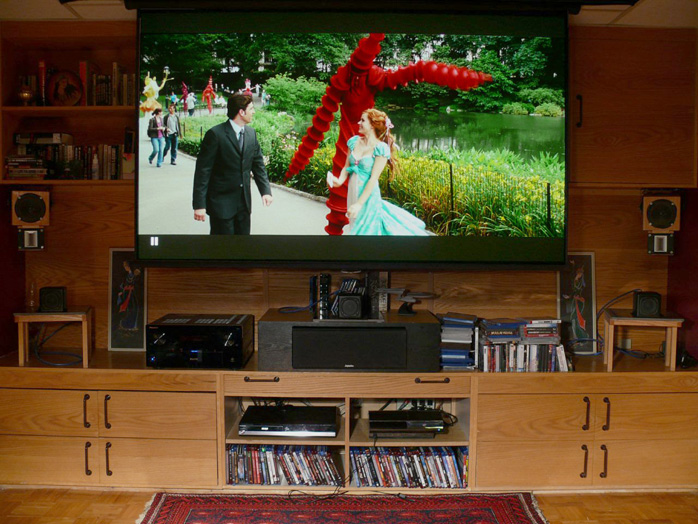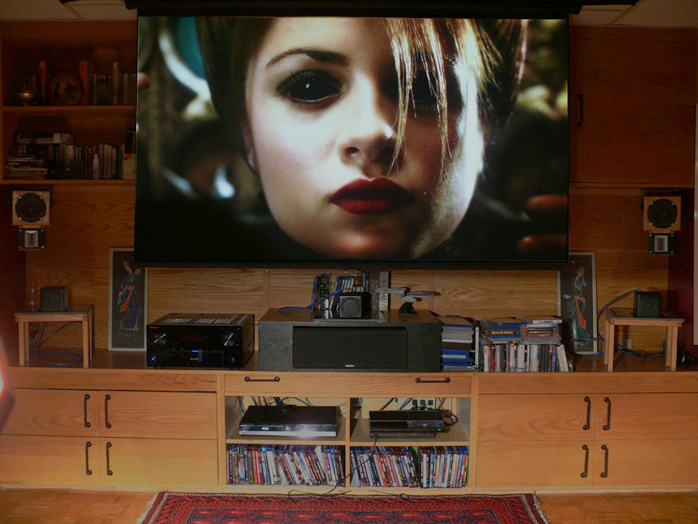This review page is supported in part by the sponsors whose ad banners are displayed below |
 |
 |
Resolution and dynamics: The M3 is not an extrovert speaker. In classic small monitor fashion, it presented a richness of detail that was centered on the midrange but not confined to it. Although resolution was quite good honouring expectations of a small widebander, it did not emphasize detail but rather unraveled information in a little more polite fashion, forcing me to pay more attention to the musical content. If by that description you assume that the speaker was uninvolving, you would be wrong. The JohnBlue merely favors flow over push.
Dynamics were surprisingly well handled given the M3’s size but the dimensions also exacted a price. The speakers demanded a specific minimal level of amplifier power to bring them to full bandwidth and dynamic potential, thereby somewhat compromising low-level performance. Until that point was reached, treble extension and transient attacks were a little dulled. This proved consistent in both setups and was exacerbated by the obvious limits on maximum output levels imposed by 3-inch driver in a tiny cabinet. In short, I suffered slightly limited volume range and a mildly compressed dynamic range - a shortcoming but neither unexpected nor as serious as anticipated.
In home-theater applications, I found that the speakers very much mimicked the character of lower wattage tube amplifiers which handle compression by bringing up low-level information. While absolute bandwidth and max levels were compromised, the M3 managed an illusion of enhanced detail before reaching obvious distortion levels to create a richly detailed sonic picture within its dynamic window.
|
 |
The M3 reserved its highest level of dynamics for the midrange where it demonstrated an astonishing amount of bounce and life. When the music was predominantly in the M3’s optimal window, it could reveal a good deal of nuance and unleash a remarkable amount of power. Outside that range, the speaker maintained detail but reached dynamic limits faster. In the lower end this could be remedied by crossover blending with the subwoofer but in the upper range it necessitated careful volume settings to prevent either politeness or hardness due to compression.
Where the description so far has been in absolute terms, the perspective must be viewed in relative terms. The M3 was intended for home theater and multi-channel gaming, not just traditional stereo. This became a textbook example of strength in numbers. Dynamic range benefited tremendously from the addition of more M3 speakers in five-channel mode. Greater numbers translated as greater SPLs of course and a proportional increase in ease as the speakers operated in a wider dynamic comfort zone. This worked to best advantage with music or soundtracks with a rich mix distributed over a larger number of speakers. In those circumstances the M3/subwoofer combination could approach the scale of much larger speakers to an immensely satisfying degree. Where this characteristic worked against the JohnBlue Audio was with material that concentrated a large amount of energy in a single speaker. Under those conditions the diminutive M3 was pushed to its limits and drew attention to itself, exhibiting a little hardness at first and noticeable compression beyond that point.
|
 |
Overall loudness levels were easily superior to basic computer desktop fare and made an interesting comparison to amplified 2.0 designs higher up the audio food chain. They marginally bettered the Swans M200 MkIII and approached the Kanto i5. This became an even more interesting contest against the recently reviewed Usher S-520/SW-520 combination. The Usher demonstrated more finesse and wider dynamics but the JohnBlue with the prerequisite addition of a good sub offered an advantage in both low-end power and ease of placement. With smaller speakers, room size does matter and the JohnBlue thrives in an environment where practical room dimensions dictate serious decisions.
|
|
|
Frequency response: JohnBlue Audio speakers have been noted for reveling in the range inhabited by female vocals and violin. That held true with the M3. In this range the performance was big, bold and vivid, with a dynamic fervour that contradicted the tiny dimensions. Highs were well served with extension, detail and if not pushed to extreme levels, remarkable smoothness. But it was in the lower midrange where the M3 proved most surprising. Relieved of LF, the 3-inch widebander threw out considerable energy with a high level of articulation, richness and weight that sounded like a much larger driver. No lightweight balance here.
|
 |
The advantages of a satellite/subwoofer combination were immediately obvious. The addition of the subwoofer brought the extreme low frequencies in the spotlight and allowed the overall performance to rival the abilities of normal floorstanders. Subwoofer integration was fast and painless and the M3s gained had a wide flat response if driven at comfortable levels. The 3-incher gave definition and shape, the subwoofer added solidity of room-rattling proportions. The pair created a relatively seamless entity that built on the M3’s midrange strengths and afforded male basso profundo and lower piano registers detail, weight and power.
|
 |
In terms of overall character, the balance fell somewhat to the musical rather than analytical side. The M3s were slightly more overt than the Swans but less so than the Kanto i5s or Usher S-520s, which managed better overall transparency. The JohnBlue displayed a similarity with the recently arrived Audio Space AS 3/5A (an updated homage to the venerable BBC LS-3/5A monitor) with both designs focusing attention solidly in the midrange and extending from there in a ‘matter of fact’ cohesive fashion.
|
|
|
Soundstaging and imaging: Big is the operative word -not big for a small speaker but simply big, period exclamation mark. The M3s painted a large portrait of players on a large canvas. The presentation was slightly forward, creating a more immediate point of view than pronounced depth perspective which when combined with the meaty tonal balance exuded solid dimensionality. In stereo mode this character was most convincing with smaller scale works, less so with larger orchestral pieces. In multi-channel mode the JohnBlue gained considerably greater ease and the ability to better differentiate instrumental proportion and placement with regard to larger-scale material. The speakers disappeared as sources and presented a very tall wide soundstage that had good localization, extremely convincing envelopment but mildly foreshortened depth. They were very forgiving of seating position and displayed their virtues over a large listening area especially in 5.1.
|
 |
Soundstage dimensions and placement were consistent within a reasonably wide volume range but compressed inwards if the volume level was pushed beyond, then exhibiting increasing amounts of dynamic compression and upper frequency hardening. The resolving power of the speakers made it easy to spot the onset of those limits and a small reduction of volume restored the immensity of the acoustic landscape.
|
 |
Against other bookshelf-sized speakers the M3s held their own in recreating image size and overall placement. In stereo mode the Usher S-520s and Audio Space AS-3/5As had the advantage of somewhat better layering and better consistency over a wider range of volume but the M3s had comparable solidity and dimensionality in their comfort zone. In multi-channel mode the JohnBlue outperformed my ad hoc multi-channel speaker setup by producing a more coherent sound field to clearly demonstrate the advantages of identical single-driver loudspeakers all around. Although my regular system could muster a few more decibels of overall output, the JohnBlues were comparatively more seamless with a slightly more accurate tonal balance and exhibited considerably less cabinet coloration than my Definitive Technology C1 center.
|
 |
  |
 |